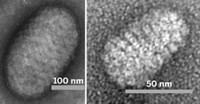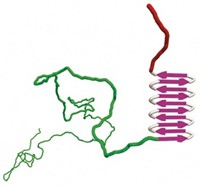Advertisement
Grab your lab coat. Let's get started
Welcome!
Welcome!
Create an account below to get 6 C&EN articles per month, receive newsletters and more - all free.
It seems this is your first time logging in online. Please enter the following information to continue.
As an ACS member you automatically get access to this site. All we need is few more details to create your reading experience.
Not you? Sign in with a different account.
Not you? Sign in with a different account.
ERROR 1
ERROR 1
ERROR 2
ERROR 2
ERROR 2
ERROR 2
ERROR 2
Password and Confirm password must match.
If you have an ACS member number, please enter it here so we can link this account to your membership. (optional)
ERROR 2
ACS values your privacy. By submitting your information, you are gaining access to C&EN and subscribing to our weekly newsletter. We use the information you provide to make your reading experience better, and we will never sell your data to third party members.
Materials
DNA cytoskeleton strengthens liposomes
Three DNA sequences self-assemble to form an artificial cytoskeleton that shores up lipid membranes
by Celia Henry Arnaud
July 10, 2017
| A version of this story appeared in
Volume 95, Issue 28

Liposomes have many potential uses: as models for biological cells, as biosensor platforms, and as drug delivery systems. But these lipid membrane structures are fragile. To shore up these structures, Miho Yanagisawa of Tokyo University of Agriculture & Technology, Masahiro Takinoue of Tokyo Institute of Technology, and coworkers use DNA as a structural material to build a cytoskeleton for liposomes (Proc. Natl. Acad. Sci. USA 2017, DOI: 10.1073/pnas.1702208114). The researchers make the cytoskeleton out of three DNA sequences that self-assemble into a Y-shaped double-stranded motif with overhanging pieces of single-stranded DNA. The overhangs allow the Y motifs to further assemble into larger spherical networks. Negatively charged DNA interacts with positively charged lipids in the liposome membranes to form a shell at the interior surface of the liposomes. Liposomes with the DNA structures are sturdier than ones without the cytoskeletons. For example, they are better able to withstand sudden concentration changes in their molecular surroundings, a phenomenon known as osmotic shock. But this extra stability occurs only when the DNA is in a gel phase rather than when it’s crystalline. The mechanical properties of the DNA gel can be controlled by changing the DNA sequence and the length of the overhangs, the researchers note.





Join the conversation
Contact the reporter
Submit a Letter to the Editor for publication
Engage with us on Twitter